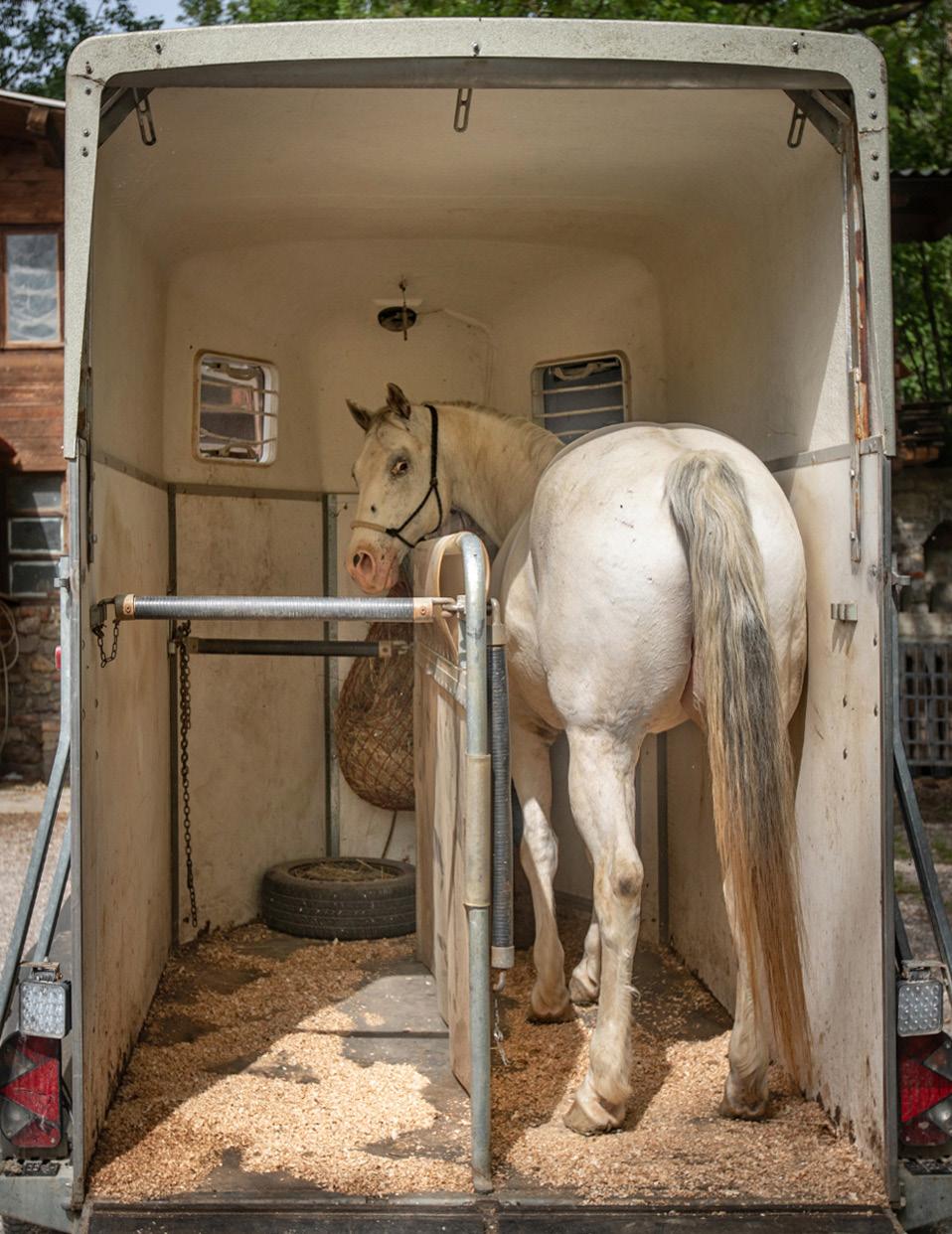
4 minute read
Coaching with Christine
COACHING WITH CHRISTINE
Floating with confidence
If successfully loading your horse onto a float has so far eluded you, CHRISTINE ARMISHAW is here to help.
Successful loading combines several factors. Your horse needs to be in a calm, learning state; you need a good grasp of the concept of pressure-release; and you need to have plenty of time – a ticking clock never does anyone any favours. both comfortable and understands the
exercise, they will go on the float. It’s your job to ensure these parameters are in place. Yes, horses may have had previous experiences which make them hard to float. However, when someone
says ‘he knows how to get on, he’s just being difficult’, they are missing the mark. More realistically, there is a lack of training; or the horse has learnt to reliably find pressure relief away from the float; or the horse is scared and doesn’t fully understand what is being asked of it; or a combination of these things.
Be well set up
Make sure the float is secured to a vehicle. Check it is sound, paying close attention to the floor and ramp, which must be dry and in good order. Park on level ground with good footing - slippery surfaces are not suitable. Position the float in a way that allows in the most daylight and open the front people doors. A horse’s eyes take longer to adjust to changes in light than ours, and this needs to be accounted for.
Put wood shavings on the floor towards the rear of the float. Absorbing moisture from urine and manure will help prevent the area becoming slippery during transit. Plan to drive slower than normal, it’s hard for your horse to balance and stabilise, and they need to build up the small but important muscles required to stand steady. In fact, a youngster or a horse that’s seldom travelled will find


floating much more difficult than one who enjoys regular outings.
Come with me
Before even presenting the horse to the float, always check it has a good leadresponse, that is, when you put pressure on the lead rope, it promptly walks forward. If it doesn’t, which is usually the case with a hard-to-load type, take some time to tune this aid. While putting forward pressure on the lead, use a long dressage whip as an extension of your arm and reach out to apply quick tapping on the horse’s side. As soon as one front foot steps forward, both the lead pressure and tapping must stop. Tell the horse how amazing they are, because positive reinforcement helps to seal the deal.
Then repeat, with lead pressure as the first part of the aid, and whip tapping as the follow-up if the horse doesn’t step forward within two beats (two seconds). Timing is critical, the pressure must stop as soon as the horse steps forward with one front foot. Make sure you have reverse too. Use backwards lead pressure and tapping on the horse’s chest or front leg if this response is also heavy. Once these are properly established, you are ready to move closer to the float.
As soon as you feel resistance to lead pressure, the whip tapping should start again and stay on, even if the horse is moving backwards. Stop the moment a foot takes one step forward - yes, just one step! Work like this as your horse slowly moves up to the float, onto the ramp and inside. It can take a while, but that’s part of it.
The back feet can be a sticking point, but keep to the plan and be patient. Be consistent in applying forward rope pressure and whip tapping when the horse is not moving forward or is moving backwards (walk with it but keep the pressure on). Take all pressure off as soon as you get one forward step, even if you’ve ended up ten steps away from where you started. Pepper the correct responses with praise, using a soft voice and pats (not slaps, they are not soothing). Let the horse take as much time as it needs to lick and chew at the completion of steps, this is where the learning is happening and it shouldn’t be overlooked.
Sometimes a horse is so resistant that they won’t go past a certain point. Working them away from the float, then coming back to it again, redefining the float as the place they get to relax, can help. However, guidance from a professional is recommended here.
Finally, don’t just aim to get your horse on and lock the doors - once is never enough. Throughout the process, during moments of calm standing, also ask the horse to quietly back off the ramp, one step at a time. Regular float training will lead to a more confident loader, so build travel practise into your regular program to normalise it. The amazing places you can then go together will make it all worthwhile.
Now go to Equestrian Hub where you’ll find a super helpful float loading video.










